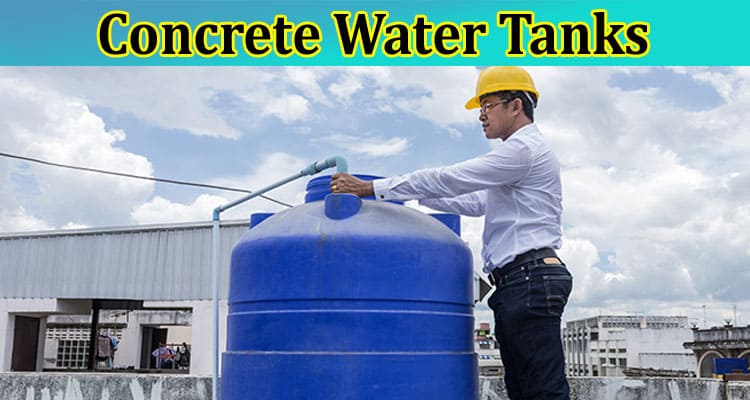Water storage is critical to infrastructure development, especially in regions prone to water scarcity or where reliable water distribution systems are lacking. Concrete water tanks have been widely used among options available for water storage, concrete durability, and versatility.
However, as with any infrastructure investment, the long-term viability of concrete water tanks warrants careful consideration. This article delves into the suitability of concrete water tanks for long-term use, exploring their advantages, challenges, and factors affecting their performance over time.
Advantages of Concrete Water Tanks:
Concrete water tanks in CivilMart, for instance, offer several advantages that make them attractive for long-term water storage solutions:
1. Durability
Given its inherent strength and resilience, concrete is an excellent material when it comes to the construction of water tanks. Concrete tanks can withstand various environmental difficulties, such as exposure to the elements, soil pressures, and seismic forces, provided they are designed and constructed appropriately.
2. Stability
Even when subjected to enormous weights or forces from the outside, concrete water tanks maintain their structural integrity, making them an exceptionally stable material. Because of its stability, the risk of collapse or failure is reduced, which results in the provision of dependable water storage solutions for the long term.
3. Versatility
Tanks made of concrete can be adapted to satisfy various storage requirements, including elevated, above-ground, or underground. Personalizing them in terms of shape and size is also possible, which provides flexibility in design and installation to fit various site requirements depending on the situation.
4. Low Maintenance
Concrete’s maintenance requirements are far lower than tanks made of other materials. The tank may require routine inspections and occasional repairs; however, the overall maintenance expenses will stay relatively low during its lifespan, contributing to its cost-effectiveness over the long run.
5. Thermal Mass
While the large thermal mass of concrete helps maintain the water’s temperature inside the tank, it also helps reduce the possibility of the water freezing in colder areas. It minimizes the amount of heat that is absorbed in warmer environments. Because of their thermal stability, concrete water tanks can function better and last longer in various climatic conditions.
Challenges and Considerations
Despite their numerous advantages, concrete water tanks also present specific challenges and considerations for long-term use:
1. Construction Costs
The initial cost of constructing a water tank made of concrete may be more than the cost of building one made of other materials. This is primarily due to the high cost of materials, labor, and specialized construction techniques. Concrete, on the ability over a long period of time, requires very little maintenance, which may help offset this cost.
2. Installation Time
More time is usually required to construct a concrete water tank compared to the construction of prefabricated choices or alternative materials. It may be necessary to engage in thorough planning in order to ensure that the project is finished on time if there are delays in the construction process.
3. Structural Integrity
The structural integrity of a water tank can be compromised by bad design or building techniques, even though concrete is naturally more robust than other materials. Several factors, including insufficient reinforcing, incorrect curing, or materials not up to specification, might increase the likelihood of fractures, leaks, or failure over time.
4. Corrosion Potential
Concrete itself is resistant to corrosion; however, metal components such as reinforcing bars (rebar) employed within the tank can be prone to corrosion if exposed to water and oxygen for an extended period. To mitigate this risk, it is vital to implement corrosion prevention measures and proper concrete cover.
5. Water Quality Concerns
Concrete water tanks may affect water quality, particularly during the initial curing period when alkaline compounds leach into the water. Proper curing procedures and regular maintenance are necessary to ensure water quality standards are met and maintained throughout the tank’s lifespan.
Factors Affecting Long-Term Performance
Several factors influence the long-term performance of concrete water tanks:
1. Design and Construction Quality
The structural integrity and durability of a concrete water tank depend heavily on its design and construction quality. Experienced engineers and skilled construction teams should be involved in every project stage to ensure adherence to industry standards and best practices.
2. Environmental Conditions
The climate and environmental conditions where the water tank is located can significantly impact its longevity. Exposure to extreme temperatures, seismic activity, soil composition, and chemical exposure must be considered during the design and construction phases.
3. Maintenance Practices
Regular maintenance is essential for preserving the integrity of a concrete water tank over time. This includes periodic inspections, cleaning, repairs, and protective coatings to prevent deterioration and extend the tank’s lifespan.
4. Water Usage Patterns
The frequency and volume of water usage can influence the wear and tear on a concrete water tank. Proper sizing and managing water storage capacity can minimize stress on the tank and prolong its service life.
5. Regulatory Compliance
Compliance with relevant building codes, regulations, and industry standards is crucial for ensuring the safety and reliability of concrete water tanks. Regular inspections and adherence to maintenance protocols are necessary to meet regulatory requirements and mitigate potential risks.
A Sustainable Solution for Long-Term Water Storage
Concrete water tanks remain viable for long-term water storage, offering durability, stability, and versatility for various applications. While they present specific challenges and considerations, proper design, construction, and maintenance practices can mitigate these risks and ensure the continued performance of the tank over its lifespan.
As demand for sustainable water management solutions grows, concrete water tanks will continue to play a significant role in meeting the evolving needs of communities worldwide.








